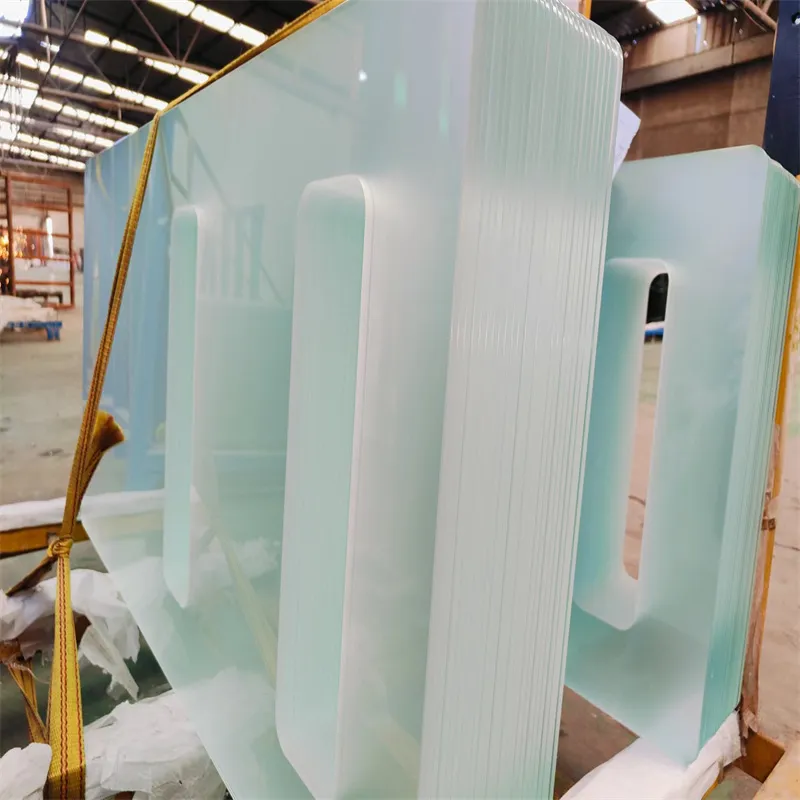Dec . 13, 2024 02:40 Back to list
what is ag glass
Understanding AG Glass A Comprehensive Insight
AG glass, or anti-glare glass, has emerged as a pivotal component across various industries, particularly in the fields of electronics, automotive, and architecture. Its unique properties make it an essential choice for applications where visual clarity and comfort are paramount. In this article, we will explore the features, benefits, manufacturing processes, and applications of AG glass, shedding light on its significance in modern technology.
What is AG Glass?
AG glass is specially treated to reduce glare and reflections, enhancing visibility and comfort for the viewer. This is primarily achieved through a frosted or textured surface that diffuses light rather than allowing it to reflect directly into the eyes. The process of creating AG glass typically involves sandblasting or acid-etching the surface, resulting in a material that substantially diminishes the intensity of reflections.
Key Features of AG Glass
One of the most significant features of AG glass is its ability to minimize glare, which is particularly beneficial in brightly lit environments. This characteristic is crucial for screens, such as those found on smartphones, tablets, and computer monitors, where screen visibility is often compromised by ambient lighting. AG glass also provides a soft touch aesthetic that enhances the user experience, making devices more comfortable to use for extended periods.
Another feature of AG glass is its durability. Many AG glass products include tempered glass, which is heated and cooled to improve its strength. This treatment not only ensures that the glass can withstand everyday wear and tear but also enhances safety, as tempered glass shatters into small, blunt pieces rather than sharp shards.
Benefits of Using AG Glass
The benefits of using AG glass extend beyond glare reduction. For one, it can boost productivity in work environments where prolonged screen time is common. By reducing glare, AG glass minimizes eye strain, allowing employees to work efficiently without frequent breaks. This is particularly beneficial in sectors such as design, financial services, and any field that utilizes screens extensively.
what is ag glass

AG glass also contributes to improved aesthetics. In architectural applications, it can enhance the design and functionality of buildings by allowing natural light to filter through while reducing direct glare. This creates a more comfortable environment for occupants and visitors alike. Additionally, in automotive applications, AG glass improves visibility for drivers and passengers, leading to safer driving conditions.
Manufacturing Processes
The production of AG glass involves several meticulous processes to ensure that quality standards are met. The initial step usually includes selecting the appropriate type of glass, followed by treatments to create the anti-glare surface. The methods employed can vary depending on the desired texture and finish; sandblasting mixes sand with air to create a rough texture, while acid etching involves using a chemical solution to achieve a smooth, frosted finish.
Once treated, the glass is subjected to inspections to ensure that it meets rigidity and clarity standards. Quality control is critical at this stage, as any flaws can compromise the product's functionality. Finally, AG glass is cut, polished, and packaged for distribution.
Applications of AG Glass
AG glass finds applications in various industries. In consumer electronics, it is widely used in smartphones, tablets, laptops, and televisions where reduced glare enhances the user experience. In automobiles, AG glass is used for dashboards and displays, making it easier to read information while driving. Its usage extends to architectural applications as well; many modern buildings incorporate AG glass in their facades and windows to provide occupants with a comfortable view of the outside world without excessive light interference.
Conclusion
AG glass is undeniably a crucial advancement in material technology. Its ability to reduce glare and enhance visibility has made it an integral part of various sectors, from electronics to architecture and automotive industries. As technology continues to evolve, the demand for high-quality AG glass is likely to increase, driving further innovations in its manufacturing and applications. With its myriad benefits and versatile uses, AG glass stands as a testament to how thoughtful material design can improve everyday experiences.
-
Safety and Style with Premium Laminated Glass Solutions
NewsJun.24,2025
-
Reinvents Security with Premium Wired Glass
NewsJun.24,2025
-
Premium Float Glass Line for Modern Architecture
NewsJun.24,2025
-
Low Emissivity Glass for Energy-Efficient Architecture
NewsJun.24,2025
-
High-Performance Insulated Glass Solutions for Modern Architecture
NewsJun.24,2025
-
Elevates Interior Style with Premium Silver Mirror
NewsJun.24,2025
Related PRODUCTS














